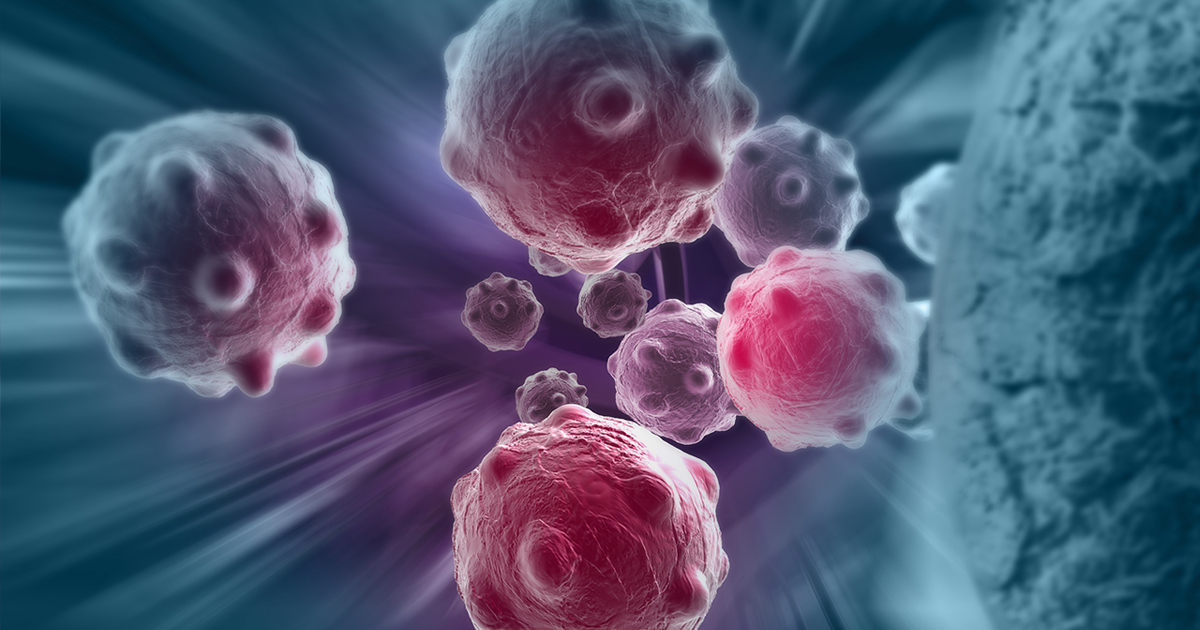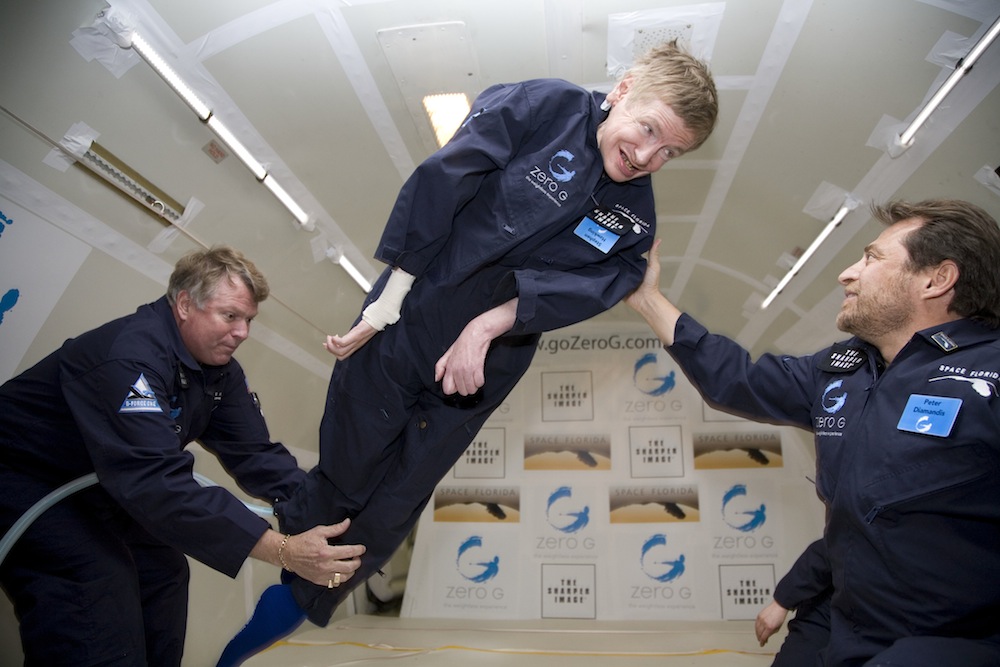
Cancer’s days are numbered and there’s good reason to believe we can cure it within the next 10 years.
Let’s first define cancer…
Cancer is not a single disease. The term cancer encompasses more than 200 diseases in which abnormal cells divide without control and can invade nearby tissues. These abnormal cells—referred to as cancer cells—evade our body’s natural protection mechanisms and can multiply to form tumors in tissues, or in the case of blood cancer, can crowd out normal cells in our bloodstream.
This year alone in the U.S., the National Cancer Institute estimates that there will be approximately 1.9 million new cancer cases. Roughly a third of these individuals will die from cancer this year. To put this number in perspective, this is almost 1,700 people per day. Globally, there are about 9.5 million cancer-related deaths each year.
Fast forward to today and a cascade of technological breakthroughs are creating unstoppable momentum in our fight against cancer. We can now attack cancer from a constellation of angles with treatments that are less toxic and, in many cases, far more effective than standard options.
Welcome to a new era of transformational innovation, historic watershed moments, and extraordinary hope in our war on cancer.
Here are 6 of the most promising treatments for you to track.
Let’s dive in…
NOTE: Are you interested in increasing your healthspan? Every year, I take a small group of entrepreneurs, investors, and philanthropists on an annual Platinum Longevity & Vitality Trip to experience first-hand exposure to the major players, scientists, companies, and treatments in the longevity and vitality arena.
1. Checkpoint Inhibitors
A recent breakthrough cancer study reported in The New England Journal of Medicine showed that treatment with the drug dostarlimab resulted in complete remissions of early-stage rectal cancers in every treated patient. I repeat—every treated patient.
Approved by the FDA in August last year, dostarlimab is a kind of cancer immunotherapy treatment referred to as a “checkpoint inhibitor.” The name comes from the fact that checkpoint inhibitors block (i.e., inhibit) the brakes (i.e., checkpoints) that tumors use to fend off our immune system’s T cells.
The first significant implication of this study is that checkpoint inhibitors can be applied to early-stage rectal cancers with incredible efficacy. Conceivably, this could eliminate the need for surgery, radiation, and chemotherapy one day—with immune memory preventing future cancer spread.
Additionally, the current rectal cancer standard of care requires surgery. If the cancer is too close to the anus, patients need AP resections that require a colostomy bag for waste elimination. With checkpoint inhibition therapy, rectal cancer patients may now avoid this and drastically improve their quality of life.
2. Personalized Cancer Vaccines
If you were to closely examine the surface of a tumor cell, you would see that it’s bristling with unique proteins known as antigens. T cells produced by our immune system are deployed to detect and attach themselves to antigens on the surface of tumor cells. By doing so, these T cells kill tumor cells and prevent the spread of cancer.
Neoantigens are new antigens that are the result of mutations found only in tumor cells. Highly personalized vaccines known as neoantigen cancer vaccines are a novel approach being used to find the neoantigens on an individual patient’s tumor.
So, how does this work?
Scientists start by sequencing small bits of tumor obtained via a biopsy, looking for mutations that produce neoantigens. They then select for neoantigens that are abundant and most likely to attract T cells. These neoantigens are then synthesized in a lab and packed into a vaccine.
Over the course of several months, patients receive injections containing millions of these neoantigens specifically designed to bootstrap our immune system to produce T cells that attack these specific neoantigens and the tumor.
A number of these neoantigen vaccines are currently being developed in the treatment of triple-negative breast cancer, advanced melanoma, and lung non-small-cell cancer.
3. Natural Killer Cells HARVESTED FROM HUMAN PLACENTAS
You may have heard about chimeric antigen receptor (CAR) T-cell therapy. While a promising treatment for some patients, CAR T-cell therapy has sometimes been shown to incite disastrous immune responses—Cytokine Release Syndrome (CRS) being perhaps the most serious and well documented.
Meanwhile, a more robust and higher-endurance cousin of T cells is making waves in the fight against cancer. Known as natural killer (NK) cells, these immune system mercenaries have advantages over T cells in that they are less prone to some of CAR T-cell therapy’s side effects. And NK cells don’t have to come from the patient they’re trying to treat.
Dr. Bob Hariri and colleagues at Celularity are pioneering the use of NK cells from human placentas to combat cancer. Often regarded as a throwaway organ, placentas are actually packed with NK cells. In fact, placental NK cells may last twice as long as ordinary NK cells, secrete higher levels of enzymes that break apart tumor cells, and are armed with a toxic cocktail of proteins that kill tumor cells.
Optimism abounds after Celularity’s experimental NK-cell therapy, Taniraleucel, demonstrated considerable promise in lab mice injected with human brain cancer cells. Human clinical trials of Celularity’s specially formulated NK cells are currently in progress.
4. ecDNA Targeted Therapy
In 2019, scientists at UCSD observed circles of extrachromosomal DNA (ecDNA) that independently replicated outside of our chromosomes. As it turns out, ecDNA are found in more than half of all solid tumor types but are largely absent from healthy cells. They also possess the ability to replicate faster than normal DNA to drive cancer.
In a sense, these ecDNA circles are like canaries in the coal mine that warn against the presence of cancer.
Leading the pack is the company Boundless Bio, combining imaging and molecular analysis tools to exploit unique vulnerabilities in ecDNA circles. With enhanced genomic and mapping techniques elucidating the structure of these ecDNA circles, it is now harder for cancer to hide in plain sight and we now have additional targets that we can pinpoint and attack cancer with.
5. Synthetic Lethality
Today, gene editing tools such as CRISPR are being paired with genomic data and machine learning algorithms to target problematic cancer gene pairs and knock them out utilizing the approach of synthetic lethality.
What differentiates synthetic lethality from other treatment methods in our list is that synthetic lethality is not a drug, but rather a novel treatment approach used to disable cancer.
Synthetic lethality refers to a new strategy for tackling hard to treat cancers. It is based on the dependency of two cancer genes on each other, where mutation of one gene is more likely to allow cancer cells to survive. However, mutation of both cancer genes at the same time will cause cancer cell death.
Our bodies possess genes referred to as “tumor suppressor genes.” The loss of tumor suppressor gene function—often by mutation—can turn normal cells into cancer cells. Targeting the gene partner of these genes that have lost tumor suppression function allows us to precisely target cancer cells.
You may have heard of the actress Angelina Jolie having preventative bilateral mastectomies because she carried the BRCA1 gene mutation. Interestingly enough, the BRCA1 gene is a key tumor suppressor gene and was found in the first synthetic lethal interaction.
Why does this matter?
When you consider the exponential number of potential synthetic lethal gene pairs in the human genome that we are now finding, this transformative precision medicine approach can now be implemented to track and terminate these troublesome gene pairs that communicate with each other and perpetuate the spread of cancer.
6. Food & Our Microbiome
The Greek physician Hippocrates may have had one of the answers to treating cancer when he said: “Let food be thy medicine and medicine be thy food.
The foods that we eat are arguably as impactful to our health as the drugs that we take. Foods such as broccoli sprouts, for instance, are full of cancer-busting phytochemicals.
Of course, there is no exact science to what one should eat to minimize our cancer risk. However, our understanding of the microbiome is something that can certainly help inform our dietary decision-making moving forward.
A revolutionary biotech company called Viome focuses on the 100 trillion bacteria in the gut microbiome, which transform our food into fuel. (Full disclosure: my venture fund BOLD Capital is an investor in Viome.)
Viome’s AI-driven platform analyzes the biochemical activity in your body by looking at your saliva, blood, and stool. Their goal is to give you an accurate picture of your unique health, and what you can do to optimize it through food and made-to-order, precision supplements and probiotics.
Viome then combines this analysis with predictive biomarkers and precision diagnostics to detect cancers, metabolic and autoimmune disease, inflammation, and other chronic conditions. (Note: Viome Founder and CEO Naveen Jain will be discussing the latest insights and practices to help understand how our gut and microbiome impact our health and longevity during the upcoming Platinum Longevity Trip.)
Armed with this key detection tool, we will have yet another weapon in our repertoire to finally put an end to cancer as we know it.
Final Thoughts
This is just a taste of the tremendous treatment options we have now have in our fight against cancer.
The convergence of synthetic biology, genomics, AI/machine learning, cellular medicines, and immunotherapy have ushered in a new era of truly personalized medicine.
We are edging closer to a dramatically different reaction to the “Big C”—cancer. Pretty soon, this equal-opportunity scourge will be a thing of the past. And with these new revelations in cancer treatment, we have good reason to believe so.
Join Me on My Platinum Longevity Trip
Are you interested in learning how to increase your healthspan?
If yes, then consider joining me on my Platinum Longevity & Vitality Trip.
This August 10-14, 2022 and September 14-18, 2022, I'm taking two groups of VIP entrepreneurs and investors on what I call my “Platinum Longevity & Vitality Trip” to San Francisco and San Diego.
Each trip will be a luxury, 5-Star deep dive to meet with the top scientists, CEOs, clinical-stage biotech companies, and research institutes leading the charge against age-related diseases and extending the human healthspan.
Both trips are identical (capped at 35 participants per trip), during which I spend all 5 days with you as your private guide and provocateur. Through this personalized, action-packed program, my mission is to give you first-hand exposure to the major players, scientists, companies and treatments in the longevity and vitality arena.
What you get: All your questions answered. First-hand insights and early access to diagnostics, therapeutics, and investment opportunities.
To lock in your seat, sign up here!







